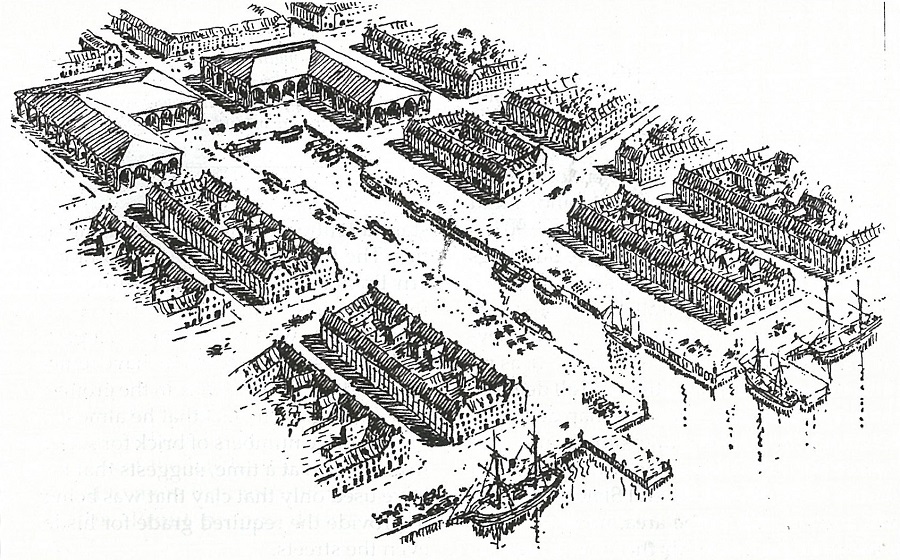 As we hit the quiet days of summer, it seems appropriate to go back and look at some of my earliest pieces. Some of these early posts lost their pictures or other data somewhere along a previous site migration. In today’s installment, I want to look at something that is, indeed, ineffably lost: Eastern Branch Market.
As we hit the quiet days of summer, it seems appropriate to go back and look at some of my earliest pieces. Some of these early posts lost their pictures or other data somewhere along a previous site migration. In today’s installment, I want to look at something that is, indeed, ineffably lost: Eastern Branch Market.
The original idea for this plan came, as so much else, from the L’Enfant plan. He foresaw markets scattered throughout the city, with the largest one on the middle, near where the Archives are today. There was also to be one in the eastern section of the city.
In 1791, it made sense to have the market near water, and since L’Enfant saw that the area that was to become the Navy Yard was to be a busy wholesale market, it made sense to have a food market nearby. He chose the squares surrounded by 5th, 7th, I, and K Streets for this purpose. In order to improve the farmer’s access to the market, a canal was to be built from the Eastern Branch (now Anacostia River) to the market.
Shortly after the United States government moved to the new federal city, plans were drawn up to implement L’Enfant’s ideas about markets: Eastern Branch Market was to be built right where it was supposed to be built. Unfortunately, there was no sign of the canal that had been proposed, but since the river cut into the city at that point, there was still a way for produce to reach the new market.

1928 drawing by Elbert Peets of what the market would have looked like, had L’Enfant’s plan been followed rigorously.
On August 29, 1806, the Daily National Intelligencer proclaimed that the new market was to be opened the following Monday. After this, information becomes scarce. Guides to the city as well as City Directories from the mid-19th Century indicate that there was indeed a market held three times a week, on Mondays, Wednesdays and Fridays, and that butchers, butter dealers, as well as provision dealers did their trade there. No picture, however, exists of the market; the closest is a picture drawn in 1928 of what the market would have looked like had L’Enfant’s plan actually been followed.
The reality, discovered through excavations around 2000, when the site was to be used for additional Marine Barracks housing, showed a much smaller building in the shape of an inverted U that covered only a small portion of one of the two city squares originally reserved for market purposes. The excavation also uncovered old brick flooring, as well as stone foundations.
The Civil War was not kind to the market, and by 1873, it was considered a ‘disgraceful shed.’ At that time, of course, Adolph Cluss (pictured) had built the new Eastern Market, in a location much more amenable to the city’s inhabitants, as well as – now – easily accessible to the farmers who were bringing in their produce.
Nothing today remains of the old market, the site of which now houses the Arthur Capper apartments as well as part of the Marine Barracks field. Even the connection to the Anacostia is gone. The inlet was filled in, then used for the Navy Yard for many years. Today, you will find the Harris Teeter on that spot.
